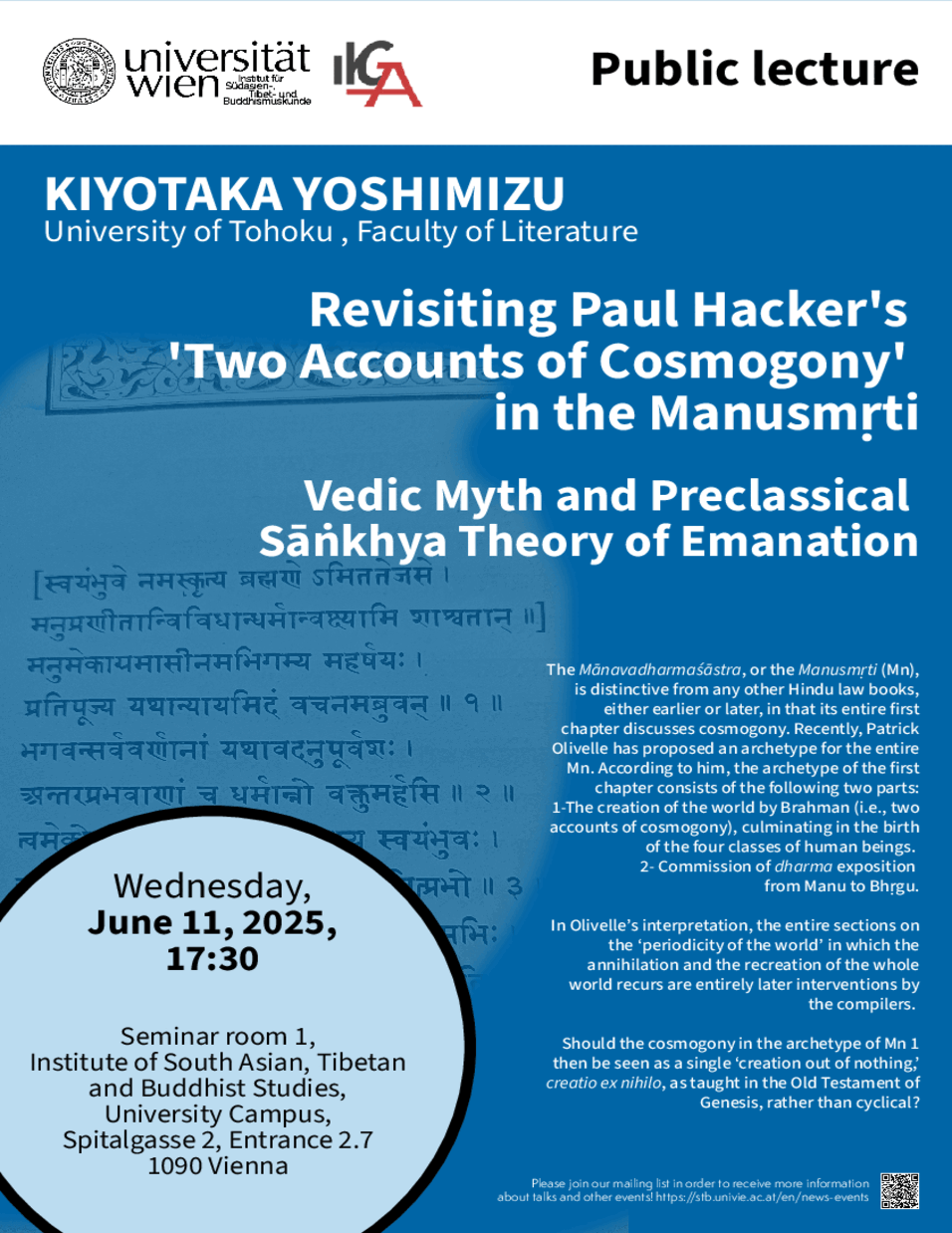The Mānavadharmaśāstra, or the Manusmṛti (Mn), is distinctive from any other Hindu law books, either earlier or later, in that its entire first chapter discusses cosmogony. Recently, Patrick Olivelle has proposed an archetype for the entire Mn. According to him, the archetype of the first chapter consists of the following two parts:
1-The creation of the world by Brahman (i.e., two accounts of cosmogony), culminating in the birth of the four classes of human beings. 2- Commission of dharma exposition from Manu to Bhṛgu.
In Olivelle’s interpretation, the entire sections on the ‘periodicity of the world’ in which the annihilation and the recreation of the whole world recurs are entirely later interventions by the compilers.
Should the cosmogony in the archetype of Mn 1 then be seen as a single ‘creation out of nothing, ’creatio ex nihilo, as taught in the Old Testament of Genesis, rather than cyclical?
The conclusions of this paper will be as follows.
1. The archetype of Mn 1 assumed by Olivelle is accepted in principle, with one additional reason and one additional verse.
2. The cyclical worldview is implied even though vv. 52–57 and 61–86 are not included in the archetype. This implication can be assumed by comparing Mn 1 with two chapters of the Mokṣadharma of the twelfth volume of the Mahābhārata.
3. However, the author of the archetype of Mn did not advocate two accounts of cosmogony because he was following the authors of the two chapters of the Mokṣadharma, but rather with the aim of correcting their view on society, which was closer to the Buddhist worldview.

